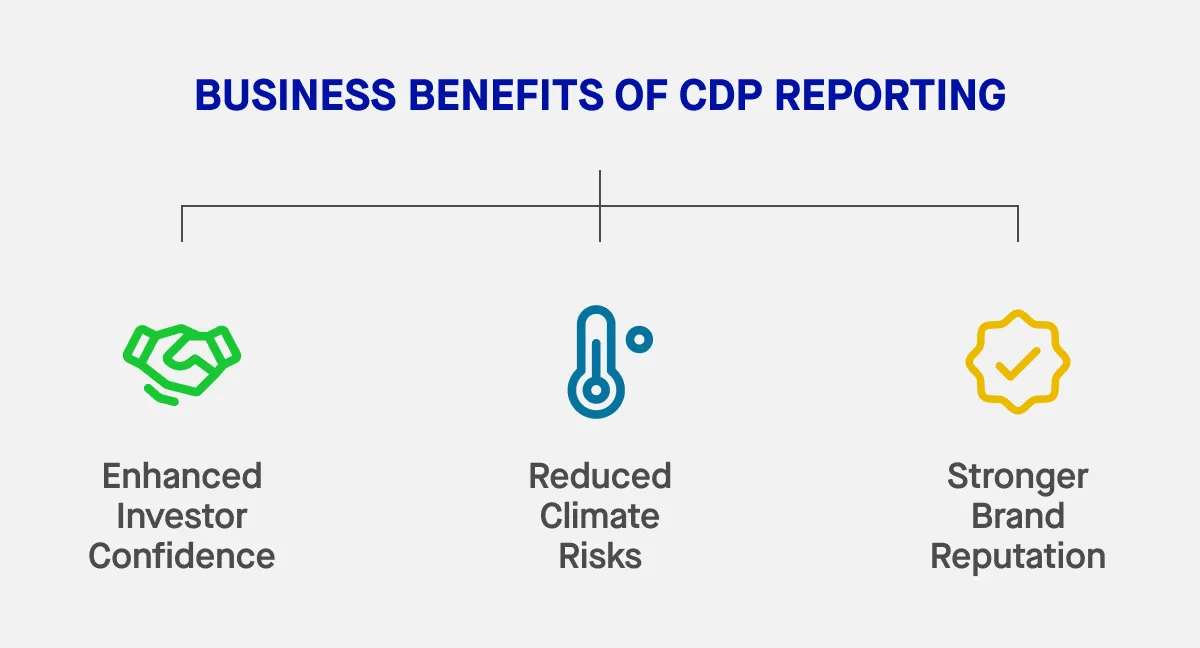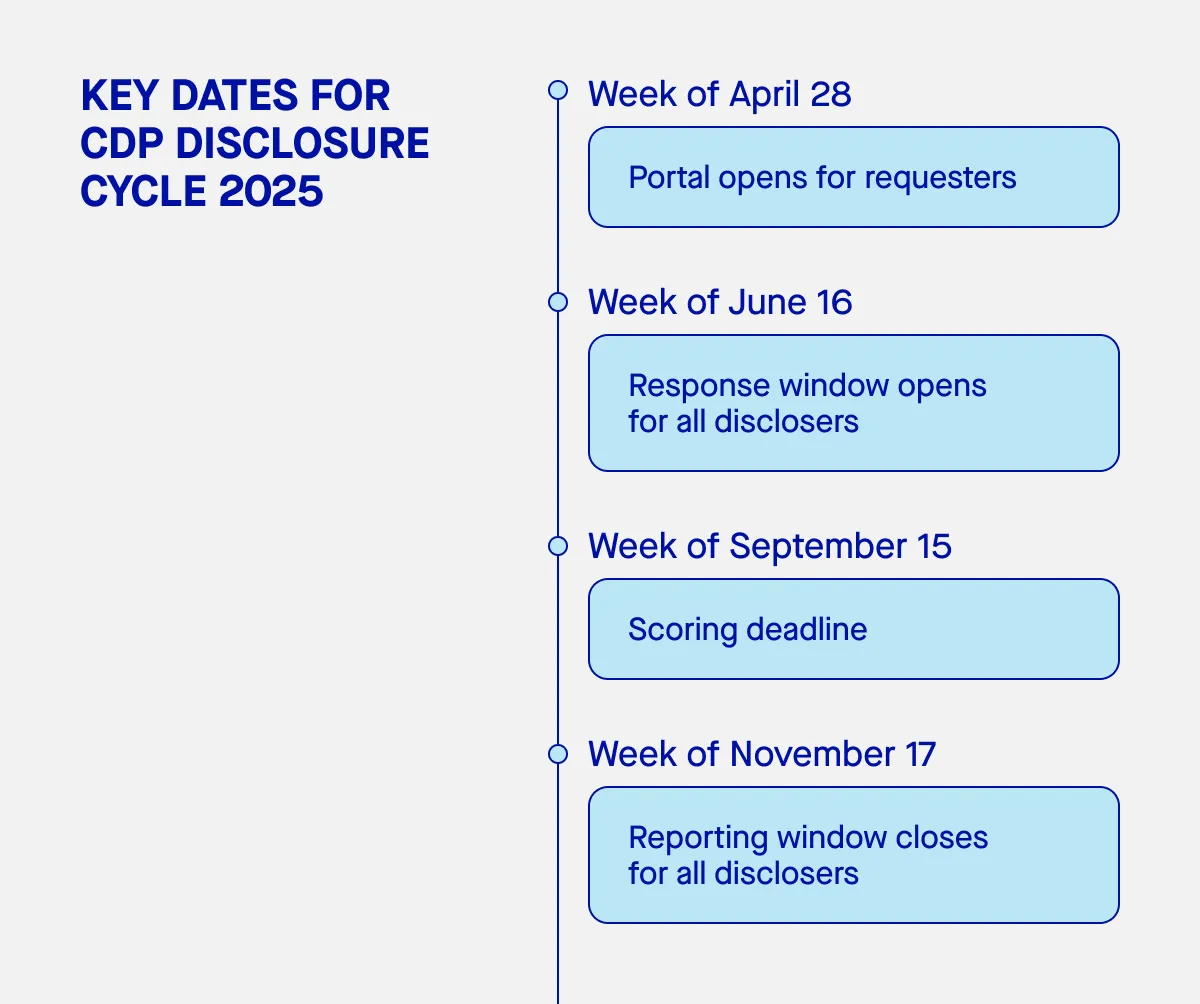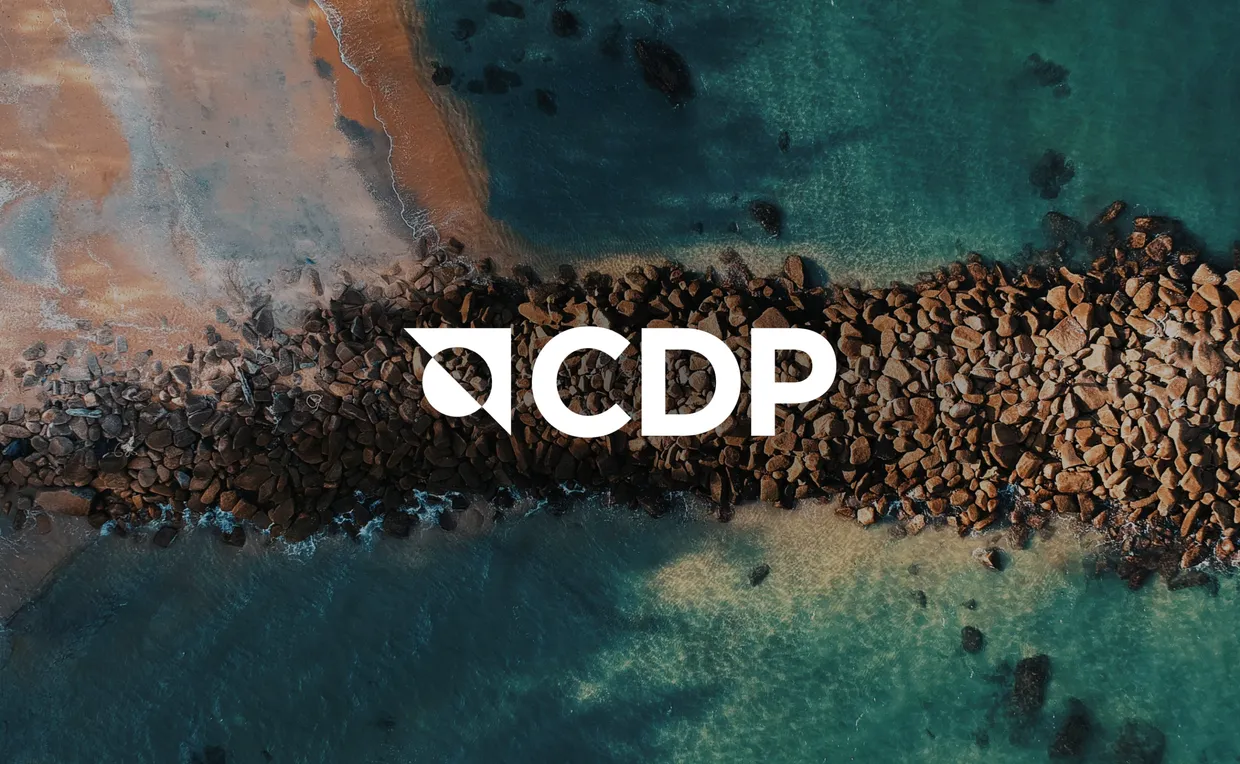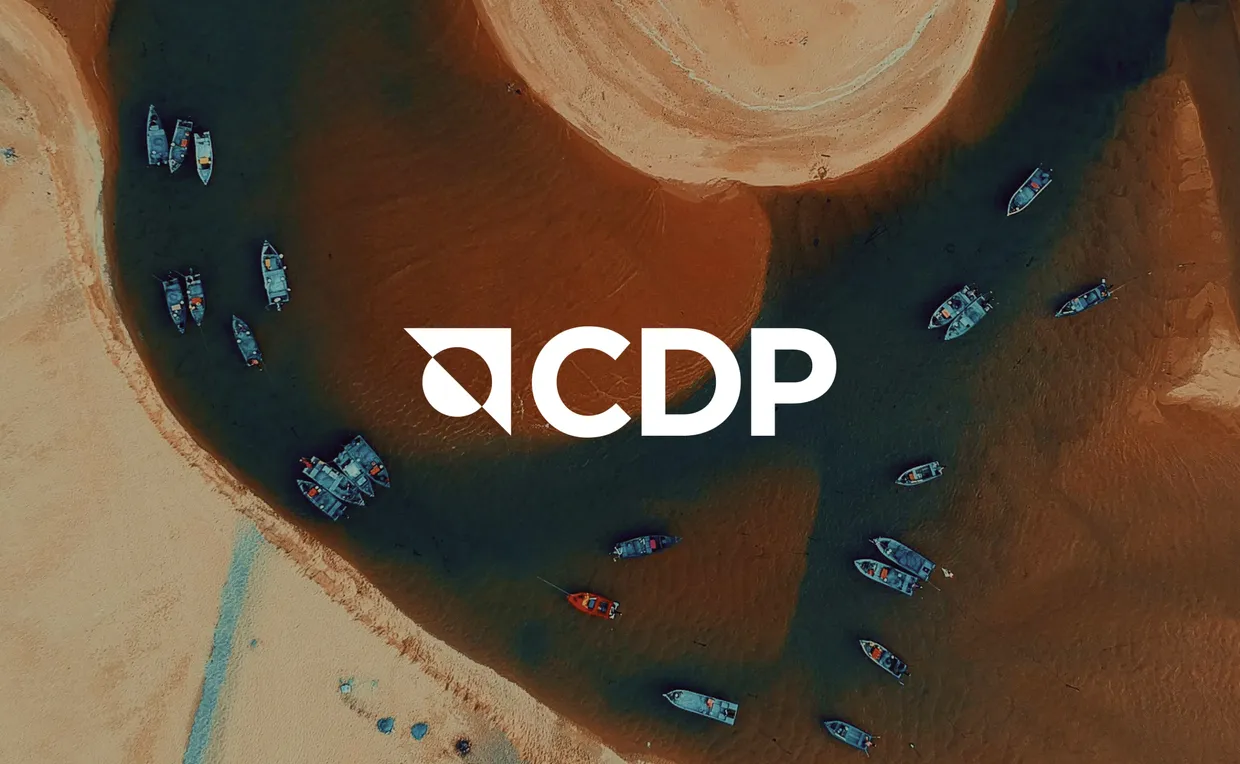CDP reporting is one of the most widely recognized systems that helps companies respond to these expectations. It provides a standardized, globally respected framework for environmental disclosure. The CDP Climate Change questionnaire is a vital tool for companies to disclose their climate risks and opportunities, emphasizing the importance of transparency in assessing environmental impact. But understanding CDP reporting and responding effectively can feel complex without the right guidance.
This guide explains everything businesses need to know to successfully navigate CDP reporting — from the purpose and benefits to timelines, challenges, and practical support options.
What is the CDP?
CDP, formerly known as the Carbon Disclosure Project, is a global non-profit organization that runs one of the world’s largest environmental disclosure systems. Founded in 2000, CDP works to drive companies, cities, states, and regions to measure and manage their environmental impacts.
Today, more than 23,000 organizations around the world disclose data through CDP, covering over half of global market capitalization. This makes CDP reporting one of the most influential sustainability initiatives globally, aligning with recognized global standards. Disclosing environmental information through CDP allows companies to communicate their environmental impacts and accountability to stakeholders, focusing on aspects such as emissions reduction and climate change mitigation.
At its core, CDP acts as a bridge between corporations and investors, connecting environmental performance with financial decision-making. Investors representing over $130 trillion USD in assets encourage companies to disclose through CDP to better assess climate-related risks and opportunities. CDP also includes regional governments in its reporting, enabling them to demonstrate their sustainability efforts and address unique climate challenges.
CDP’s approach is grounded in the belief that measurement leads to management: by disclosing environmental data, companies are more likely to take action to reduce their impact and increase their resilience.
What is the main goal of CDP reporting?
The main goal of CDP reporting is to drive transparency and action on environmental issues that have material financial risks and impacts.
Specifically, CDP reporting aims to:
Enable better investment and purchasing decisions
By providing comparable, detailed data, CDP helps investors and customers evaluate companies’ environmental performance and climate resilience. Consumers and investors use their purchasing power to support companies that disclose through CDP, aligning their spending with responsible practices. This data can influence investment, lending, and procurement decisions, particularly by highlighting the role of supply chains in sustainability reporting and risk management. Understanding climate risks and opportunities within supply chains is crucial for broader sustainability initiatives and regulatory requirements.
Support risk management and corporate resilience
CDP reporting encourages businesses to identify climate risks, make environmental disclosures, and address water vulnerabilities and deforestation exposure within their operations and value chains. Measuring and reporting an organization’s carbon footprint is crucial for effective risk management, enhancing investor confidence, and ensuring transparency in sustainability practices. Early identification enables more strategic risk mitigation planning.
Align corporate strategies with global sustainability goals
By disclosing through CDP, companies improve their sustainability disclosure practices and demonstrate alignment with major environmental initiatives such as the Paris Agreement, the Task Force on Climate-related Financial Disclosures (TCFD), the Science-Based Targets initiative (SBTi), and the UN Sustainable Development Goals (SDGs).
Acknowledging the transition to a low-carbon economy is crucial for businesses to strategically position themselves against climate risks and enhance their reputation through proactive environmental disclosures.
Drive accountability and continuous improvement
Public disclosure pressures companies to set measurable environmental targets and track progress over time, driving environmental transparency and accountability to stakeholders.
CDP reporting evaluates organizations across different levels of environmental stewardship, enhancing their brand reputation and aligning their strategies with sustainable practices.
In short, CDP reporting isn’t just about compliance — it’s about future-proofing businesses against environmental and economic risks.
What are the benefits of CDP reporting for businesses?
Participating in CDP reporting offers a competitive advantage in investment portfolios and procurement decisions, along with a range of tangible and intangible benefits for businesses. These advantages extend across risk management, reputation, operations, and stakeholder relations.
Strengthen reputation and brand value
Companies that disclose through CDP often enhance their reputation as environmentally responsible organizations. Demonstrating environmental leadership is essential for enhancing credibility and attractiveness in the market. High CDP ratings are viewed as a mark of corporate sustainability leadership, appealing to customers, investors, and partners who value ESG performance.
Meet rising stakeholder expectations
Investors, regulators, and consumers increasingly demand greater transparency around environmental issues. Reporting through CDP allows companies to proactively demonstrate their environmental action and meet these expectations, rather than reacting to external pressure later.
Gain a competitive edge
Organizations with strong CDP scores are often favored in investment portfolios, supplier selections, and procurement decisions. Demonstrating strong sustainability performance can differentiate a company from its competitors in crowded markets.
Improve internal processes and risk management
The data collection process for CDP often highlights inefficiencies or vulnerabilities within operations, such as excessive carbon footprints, water usage, energy inefficiency, or supplier deforestation risks. Managing and reporting greenhouse gas emissions is crucial for improving internal processes and risk management. Identifying these issues early helps reduce costs and increase resilience.
Facilitate access to capital
Financial institutions increasingly link lending rates and investment decisions to environmental performance. Companies that disclose robust CDP data may enjoy easier access to green finance opportunities and lower cost of capital.
Align with global reporting trends
CDP’s structure closely mirrors other emerging standards, including TCFD recommendations, ISSB standards, CSRD requirements, and the Global Reporting Initiative (GRI). The Corporate Sustainability Reporting Directive (CSRD) is a mandatory regulatory requirement within the EU, contrasting with voluntary reporting systems like CDP in terms of scope, flexibility, and compliance. Early engagement with CDP can make future regulatory reporting easier and more efficient.

What are the CDP questionnaires?
CDP issues three main sector-specific questionnaires, each addressing different environmental themes. Companies may be asked to complete one or more questionnaires depending on their industry and investor requests.
The CDP Climate Change questionnaire is a key tool for climate disclosure, encouraging companies to voluntarily report on various climate-related metrics.
Climate change questionnaire
The climate change questionnaire focuses on greenhouse gas (GHG) emissions, climate-related risks and opportunities, governance, risk management practices, and climate targets (such as net-zero commitments). It helps organizations assess and manage their environmental footprint, aiding in the development of effective ESG strategies and communication of sustainability efforts to stakeholders.
Topics covered include:
- Scope 1, 2, and 3 emissions measurement, with a particular emphasis on carbon emissions
- Carbon pricing strategies
- Scenario analysis under different climate futures
- Transition plans for decarbonization
- Physical and transitional climate risks
Water security questionnaire
This questionnaire addresses how companies manage freshwater-related risks in the context of climate change water security across their operations and value chains.
Topics include:
- Water withdrawal, consumption, and discharge
- Water risk assessments and mitigation plans
- Supplier water usage management
- Exposure to water-stressed regions
- Water targets and performance
Forests questionnaire
The forests questionnaire explores the company’s exposure to deforestation and forest degradation risks, which are part of nature related financial disclosures, particularly related to key commodities.
Relevant commodities include:
- Timber
- Palm oil
- Soy
- Cattle products
- Cocoa, rubber, and coffee (in expanded versions)
Topics include:
- Deforestation risk mapping
- Traceability systems
- Supplier management programs
- Certifications (e.g., FSC, RSPO)
Each questionnaire is modular and detailed, requiring both quantitative metrics and qualitative narrative explanations.
How do you collect data for CDP questionnaires?
Effective data collection for CDP reporting requires a thorough review of the CDP questionnaire to understand the reporting requirements and how they relate to business operations. This process necessitates careful planning, collaboration across departments, and often external support.
Identify internal data owners
The first step is to map key internal stakeholders who manage relevant data within reporting organizations. These typically include:
- Sustainability and ESG teams
- Environmental health and safety (EHS) departments
- Facilities and operations managers
- Finance and procurement teams
- Human resources (for policies and employee programs)
Map data requirements to business operations
Review the CDP questionnaire carefully to understand what data is needed and how it relates to your business units. For example, emissions data might come from energy management systems, while supply chain deforestation risks might require procurement input.
Establish data collection systems
Develop clear internal processes for gathering data, including setting emission reduction targets:
- Energy consumption records
- Water usage and discharge logs
- Transportation and logistics data
- Supplier audits and questionnaires
- Climate risk assessments
Collecting accurate environmental information is crucial for CDP reporting, as it helps investors and stakeholders assess and motivate corporate actions related to sustainability and environmental impact.
Using centralized tools (such as ESG platforms) can greatly improve data consistency.
Validate and standardize data
To meet CDP expectations, ensure that collected data is:
- Accurate and verifiable
- Consistent year-over-year
- Calculated using recognized methodologies (e.g., GHG Protocol, IPCC factors) to comply with environmental regulations
Document methodologies and assumptions
Keep detailed records of how you calculated or estimated data points. CDP often asks respondents to explain methodologies, especially for complex issues like Scope 3 emissions, within the CDP framework.
What is the CDP reporting timeline?
Understanding the annual CDP reporting process and timeline is crucial for planning and submitting high-quality responses.

February to March: CDP opens system
CDP announces its annual disclosure cycle, releases updated questionnaires and technical notes, and opens its CDP website and Online Response System (ORS) for companies to start their submissions.
March to June: data collection and draft preparation
Businesses should prioritize gathering and validating all necessary climate information during this period. Draft responses should be reviewed internally and possibly by third-party consultants.
July: final submission window
The submission deadline typically falls between late July and early August. Companies must finalize and submit their disclosures through the ORS before the cutoff to be scored and receive their carbon disclosure rating.
August to December: scoring and feedback
After submissions close, CDP analysts review responses and assign scores (Disclosure, Awareness, Management, or Leadership level). The scoring methodology provides clear guidelines for transparency and performance improvement, aligning with key frameworks like the Taskforce on Climate-Related Financial Disclosures (TCFD) to evaluate organizations’ environmental impacts. CDP maintains a distinction for companies that achieve top ratings in environmental responsibility, noting that only a select few have earned A ratings across all key reporting categories. Final scores are published publicly later in the year, unless a company chooses private disclosure.
It’s important to note that preparation for the next cycle often begins immediately after feedback is received, especially for companies aiming to improve their scores.
Managing CDP reporting manually can be time-consuming, error-prone, and inefficient — especially for large organizations. Leading ESG (Environmental, Social, and Governance) reporting tools align their data fields directly with CDP questionnaires and other ESG reporting frameworks, dramatically simplifying and enhancing the process.
Centralize data collection
ESG platforms provide a single source of truth by pulling data from multiple systems — such as energy meters, HR databases, supplier platforms — into one centralized platform. This prevents data silos and inconsistencies by centralizing data collection within a popular voluntary reporting framework.
Automate data updates
Instead of manually inputting information each year, ESG tools can automate recurring data collection processes, reducing human error and saving valuable time in the pursuit of net zero emissions.
Map data directly to CDP frameworks
Leading ESG platforms align their data fields directly with CDP questionnaires and the United Nations Framework Convention on Climate Change (UNFCCC), helping businesses easily complete required modules without duplicating effort.
Ensure data quality and audit readiness
Many ESG tools include built-in checks for data accuracy, completeness, and validation, making it easier to spot and correct anomalies before submission, thereby supporting emissions reductions.
Generate insights and improvement recommendations
Beyond reporting, ESG platforms can analyze your data to identify trends, flag risk hotspots, and recommend actions to strengthen environmental performance in the face of the climate crisis — helping businesses not just report, but also improve.
Support multi-standard reporting
Since CDP aligns closely with TCFD, ISSB, CSRD, and other frameworks, ESG tools can enable “report once, use many times” strategies, streamlining compliance across multiple ESG reporting requirements. CDP reporting contributes to fostering a sustainable economy by tracking environmental performance and enabling progress against sustainability issues, ultimately working towards combating climate change and achieving a net-zero future.
Final thoughts
CDP reporting is no longer optional for businesses committed to sustainability leadership. Incorporating climate considerations into a business strategy can enhance a company’s reputation and drive proactive environmental disclosures. It’s a critical tool for managing environmental risks, building stakeholder trust, and positioning companies for success in a low-carbon future.
Although the reporting process can seem challenging, early preparation, internal collaboration, and the right technological tools can make it much smoother and more effective. Companies that embrace transparent disclosure today will be recognized as industry leaders and be better equipped to thrive in the markets of tomorrow.




_ZgacEM.webp)

